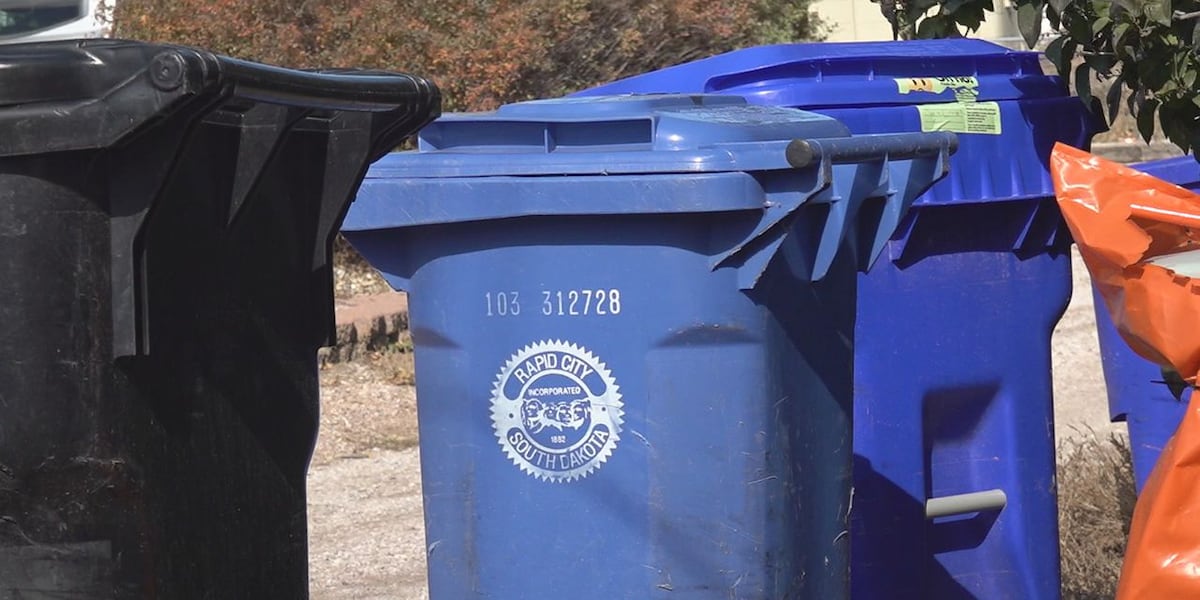Wisconsinites: Limit Time Outside Due To Canadian Wildfire Smoke – Wisconsin Department of Natural Resources (.gov)

Air Quality Advisory Report: Wisconsin’s Response to Transboundary Pollution and its Impact on Sustainable Development Goals
1.0 Advisory Overview
The Wisconsin Department of Natural Resources (DNR) has issued an extended air quality advisory effective from Thursday, July 31, through noon on Friday, August 1. This measure is a direct response to significant atmospheric pollution originating from Canadian wildfires. The primary pollutant of concern is fine particulate matter (PM2.5), which is projected to cause widespread “Unhealthy” air quality levels, with the potential for “Very Unhealthy” conditions. The situation is under continuous evaluation, with advisories potentially extending through the weekend as wildfires are expected to persist through the summer.
2.0 Public Health and Sustainable Development Goal 3: Good Health and Well-being
This advisory directly addresses SDG 3 (Good Health and Well-being), particularly Target 3.9, which aims to substantially reduce illnesses and deaths from air pollution. The presence of high PM2.5 levels poses a significant health risk.
- Vulnerable Populations: Individuals with pre-existing heart or lung conditions, older adults, and children are identified as being at heightened risk.
- Health Recommendations: The DNR strongly advises these groups to limit the duration and intensity of outdoor activities and to avoid heavy exertion. This protective action is crucial for preventing acute respiratory and cardiovascular events.
3.0 Community Resilience and Sustainable Development Goal 11: Sustainable Cities and Communities
The incident underscores the importance of SDG 11 (Sustainable Cities and Communities), which focuses on creating safe, resilient, and sustainable human settlements. The air quality crisis tests community resilience and public infrastructure.
- Adapting Urban Life: The recommendation to reschedule or move public and private events indoors is a key adaptation strategy, aligning with Target 11.6 to reduce the adverse environmental impact of cities by managing air quality.
- Infrastructure for Health: The advisory highlights the need for buildings with effective air filtration systems to serve as safe havens during pollution events, reinforcing the goal of sustainable and resilient infrastructure.
4.0 Environmental Context and SDGs 13 & 15
The root cause of the advisory—extensive wildfires—is intrinsically linked to broader global environmental challenges, connecting this local event to SDG 13 (Climate Action) and SDG 15 (Life on Land).
- SDG 13 (Climate Action): The increasing frequency and intensity of wildfires are recognized consequences of climate change. This event serves as a tangible example of the cross-border impacts of climate-related disasters, emphasizing the need for global cooperation to strengthen resilience and adaptive capacity (Target 13.1).
- SDG 15 (Life on Land): The wildfires in Canada represent a significant degradation of terrestrial ecosystems. This loss of forests and biodiversity directly contravenes the objectives of SDG 15 to protect and restore such ecosystems. The resulting smoke is a transboundary consequence of this environmental damage.
5.0 Recommended Protective Measures for Public Safety
To mitigate health risks associated with the poor air quality, the public is advised to implement the following protective measures, which support individual well-being in alignment with SDG 3:
- Monitor local air quality index reports for real-time information.
- Remain indoors with doors and windows securely closed.
- Minimize activities that generate indoor air pollution, such as vacuuming, frying foods, or burning candles.
- Enhance indoor air quality by installing and using a high-efficiency air filter.
- If outdoor exposure is unavoidable for extended periods, utilize a properly fitted N95 mask to reduce particulate inhalation.
Analysis of Sustainable Development Goals in the Article
1. Which SDGs are addressed or connected to the issues highlighted in the article?
- SDG 3: Good Health and Well-being: The article’s primary focus is on the public health risks associated with poor air quality from wildfire smoke. It issues health advisories and recommends protective measures, directly connecting to the goal of ensuring healthy lives.
- SDG 13: Climate Action: While not explicitly stated, widespread and intense wildfires, like the Canadian ones mentioned, are recognized as a significant climate-related hazard. The article discusses adapting to this hazard through advisories and personal precautions, linking it to climate action and resilience.
- SDG 15: Life on Land: The root cause of the air quality issue is wildfires, which represent a major threat to forests, biodiversity, and terrestrial ecosystems. The article’s subject is a direct consequence of the degradation of land and forests.
2. What specific targets under those SDGs can be identified based on the article’s content?
-
SDG 3: Good Health and Well-being
- Target 3.9: “By 2030, substantially reduce the number of deaths and illnesses from hazardous chemicals and air, water and soil pollution and contamination.” The article directly addresses this target by warning about illnesses from air pollution (PM2.5 from smoke) and advising citizens on how to protect their health.
-
SDG 13: Climate Action
- Target 13.1: “Strengthen resilience and adaptive capacity to climate-related hazards and natural disasters in all countries.” The issuance of an air quality advisory by the Wisconsin DNR is an example of an adaptive measure to a climate-related hazard (wildfire smoke).
- Target 13.3: “Improve education, awareness-raising and human and institutional capacity on climate change mitigation, adaptation, impact reduction and early warning.” The entire article serves as a public awareness and early warning communication, educating people on the risks and necessary actions.
-
SDG 15: Life on Land
- Target 15.3: “By 2030, combat desertification, restore degraded land and soil… and strive to achieve a land degradation-neutral world.” The Canadian wildfires causing the smoke are a clear example of large-scale land degradation, which this target aims to combat and restore.
3. Are there any indicators mentioned or implied in the article that can be used to measure progress towards the identified targets?
-
For Target 3.9:
- Indicator (Implied): The article refers to measuring the concentration of fine particulate matter (PM2.5). It explicitly mentions “Widespread Unhealthy levels of PM2.5” and “values in the Very Unhealthy category.” This aligns with Indicator 3.9.1 (Mortality rate attributed to… ambient air pollution), for which PM2.5 concentration is a key metric. The article also encourages people to “Check your local air quality index,” which is a direct measurement tool.
-
For Targets 13.1 and 13.3:
- Indicator (Implied): The existence and dissemination of the air quality advisory itself serves as an indicator. It demonstrates the implementation of an early warning system, which is part of Indicator 13.1.2 (Number of countries that have adopted and implemented national disaster risk reduction strategies) and Indicator 13.3.1 (Number of countries that have integrated… early warning into… education). The article is a tangible output of such a system.
-
For Target 15.3:
- Indicator (Implied): The article’s premise—that smoke from Canadian wildfires is impacting Wisconsin—implies a failure to prevent land degradation. The occurrence and scale of these wildfires serve as an indirect indicator of the state of terrestrial ecosystems, relevant to Indicator 15.3.1 (Proportion of land that is degraded over total land area).
4. Summary Table of SDGs, Targets, and Indicators
| SDGs | Targets | Indicators (Mentioned or Implied in the Article) |
|---|---|---|
| SDG 3: Good Health and Well-being | 3.9: Reduce illnesses from air pollution. | Measurement of air quality through the Air Quality Index and specific mention of “Unhealthy levels of PM2.5.” |
| SDG 13: Climate Action | 13.1: Strengthen resilience and adaptive capacity to climate-related hazards. 13.3: Improve education, awareness-raising, and early warning. |
The issuance and extension of a statewide air quality advisory by a government body (DNR) as an early warning and adaptation strategy. |
| SDG 15: Life on Land | 15.3: Combat desertification and restore degraded land. | The presence of widespread smoke from “Canadian wildfire” events, implying large-scale land degradation. |
Source: dnr.wisconsin.gov

What is Your Reaction?
 Like
0
Like
0
 Dislike
0
Dislike
0
 Love
0
Love
0
 Funny
0
Funny
0
 Angry
0
Angry
0
 Sad
0
Sad
0
 Wow
0
Wow
0
















































































